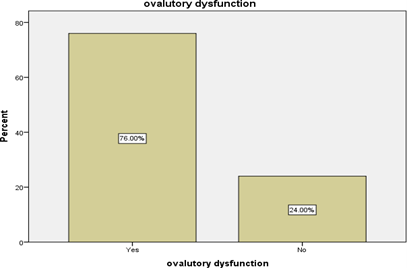PREVALANCE OF POLYCYSTIC OVARY SYNDROME (PCOS) AND ITS PHENOTYPES: A CLINICAL ANALYSIS IN SWABI
DOI:
https://doi.org/10.71146/kjmr547Keywords:
Polycystic Ovary Syndrome, PCOS Phenotypes, PrevalenceAbstract
Introduction: Polycystic Ovary Syndrome (PCOS) is a women disorder with irregular menses, hirsutism, androgenic alopecia, acne and elevated androgens. Globally it affects 4% to 20% of women. Rotterdam criteria is used for diagnosis of PCOS. Phenotypically it is classified as PCOS class A, B, C and D.
Objective: The objective of this study was to determine the prevalence of Polycystic Ovary Syndrome (PCOS) and its phenotypes in Swabi based on Rotterdam Criteria.
Material and Methods: A Descriptive Cross-sectional study of 384 participants performed at the Department of Gynecology, DHQ Hospital Swabi. Female participants of age 18-45 years were included in the study. Data was collected through questionnaire after Pelvic ultrasound for the ovarian morphology and observation for the signs of Hyperandrogenism and history of menstrual cycles. Data was analyzed through Statistical Package for Social Sciences (SPSS) version 29.
Results: In this study 26.04% females found to be Polycystic Ovary Syndrome (PCOS) positive. Hyperandrogenism was most common (86%) followed by Polycystic ovaries (77%). Among the PCOS phenotypes, the most prevalent was phenotype A.
Conclusion: Among 384 patients, 100 patients were found with Polycystic Ovary Syndrome (PCOS), with Hyperandrogenism and Phenotype A being the most prevalent. These 26.04% PCOS positive women need proper guidance and counseling about PCOS and phenotypes from which they were affected.
Downloads

Downloads
Published
Issue
Section
License
Copyright (c) 2025 Abdul Waheed, Arsalan Waqas Ahmad Shah, Siffat Ghaoour, Mahid Zaman, Arqam Sheraz, Mansoor Ahmad (Author)

This work is licensed under a Creative Commons Attribution 4.0 International License.






